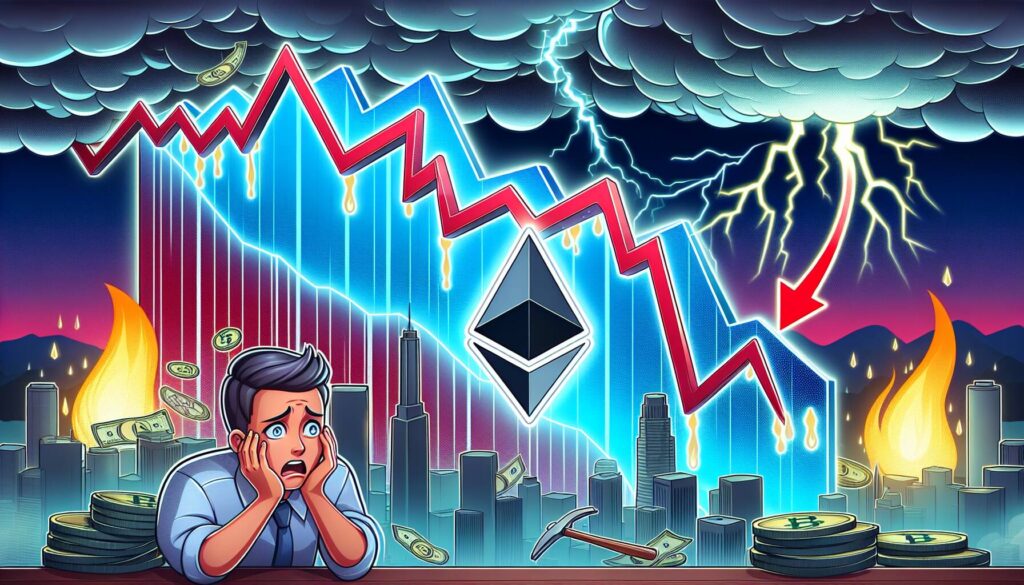Amidst the ongoing focus on the cryptocurrency landscape and broader economic themes, a recent analysis highlights Japan’s precarious financial situation, suggesting the time has come for investors and economists to shift their gaze eastward. Authored by Robin Brooks, a senior fellow at the Brookings Institution, this piece delves into Japan’s rapidly escalating debt crisis, where the nation’s staggering debt-to-GDP ratio surpasses 240%, a figure that places it at the forefront of developed economies grappling with similar issues.
For years, Japan has faced mounting economic challenges, particularly exacerbated by the COVID-19 pandemic and subsequent fiscal spending, leading to an environment of rising inflation—rates not observed since the 1980s. As inflation surges, so too do the yields on government bonds, significantly increasing borrowing costs. This precarious predicament positions Japan in a classic economic catch-22: maintaining low interest rates risks further depreciation of the Yen, while allowing yields to rise could jeopardize the sustainability of its already inflated debt.
“The bottom line is that exceptionally high government debt is putting Japan in a terrible bind,” Brooks notes, emphasizing the urgency of the situation.
The current conditions have led to speculation that Japanese investors may seek refuge in alternative financial assets, including cryptocurrencies like stablecoins. Notably, a Japanese startup, JPYC, is preparing to launch the first stablecoin pegged to the yen later this year, indicating a growing interest in digital currencies as a hedge against traditional financial uncertainties.
Interestingly, the potential for a recession in the United States could provide Japan with a temporary reprieve. Brooks suggests that should U.S. yields decrease due to a contraction in GDP, Japan might benefit as lower bond yields could serve to stabilize its precarious financial footing. However, the long-term solution remains ambiguous, hinging on whether Japanese citizens would accept the realities of higher taxes and reduced government spending to rectify the financial imbalances.

Japan’s Debt Crisis and Potential U.S. Recession Implications
Key points from the economic analysis surrounding Japan’s precarious financial situation include:
- High Debt-to-GDP Ratio: Japan has the highest public debt-to-GDP ratio among advanced economies, currently around 240%.
- Inflation Surge: Japan has experienced escalating inflation, reaching levels not seen since the 1980s, complicating the debt landscape.
- Bond Yields Rise: Increased inflation has led to higher government bond yields, raising the cost of borrowing for Japan.
- Currency Depreciation: The Yen has depreciated significantly since 2021, while appreciating recently against the U.S. dollar due to factors like Fed rate cuts.
- Investor Behavior: Growing debt concerns may drive investors towards alternative assets like cryptocurrencies, highlighting a shift in financial trust.
- U.S. Recession Relief: A potential recession in the U.S. may lower global bond yields, providing Japan with a temporary reprieve from its debt situation.
- Public Response Needed: Sustainable solutions may require Japan to implement spending cuts or tax increases, raising questions about public acceptance.
“The bottom line is that exceptionally high government debt is putting Japan in a terrible bind.” – Robin Brooks
These points impact readers by highlighting the interconnectedness of global economies, suggesting that developments in the U.S. could have significant repercussions on Japan’s financial health, and emphasizing the importance of prudent fiscal management in maintaining economic stability. The potential for cryptocurrencies as a financial escape may also resonate with those exploring alternative investments.
Japan’s Economic Crossroads: Analyzing Current Trends Amidst Global Uncertainty
The financial landscape in Japan is undergoing scrutiny as it grapples with an unprecedented debt-to-GDP ratio, the highest among developed nations. As investors look for safe havens, attention is turning to alternative assets like cryptocurrencies, and particularly stablecoins. This dynamic creates both opportunities and pitfalls for various stakeholders in the market.
Competitive Advantages: The analysis suggests that Japan’s monetary policies might soon drive investors towards stablecoins, particularly as the country launches its first yen-pegged stablecoin through the startup JPYC. This could create a new safe harbor for investors worried about the instability of traditional currencies. Moreover, if U.S. economic turmoil leads to decreased global yields, Japan might enjoy a temporary reprieve from its debt quandary, allowing for potential capital inflows and market stabilization.
Disadvantages and Challenges: On the flip side, Japan’s soaring inflation and rising bond yields complicate the situation. Investors’ demand for higher premiums to offset fiscal risks signals that confidence is wavering. Should the U.S. recession materialize, while it could momentarily alleviate some pressures, it also highlights Japan’s dependence on external factors for economic stabilization. This precarious balance could alienate domestic investors, leading to a flight of capital away from Japanese assets if the situation does not improve.
Potential Beneficiaries and Concerns: The adoption of stablecoins may benefit tech-savvy investors looking for less volatility than traditional assets. Conversely, this pivot to cryptocurrency could challenge traditional financing mechanisms, putting additional pressure on the established banking sector. Simultaneously, the call for higher taxes and cuts in social spending could face severe public backlash, creating social unrest and complicating government efforts to navigate through this economic turbulence.
As Japan faces the dual specters of rising inflation and national debt, the interplay between traditional financial systems and emerging cryptocurrencies will be pivotal. Stakeholders must be prepared for volatility as the country seeks sustainable pathways out of its economic labyrinth.













